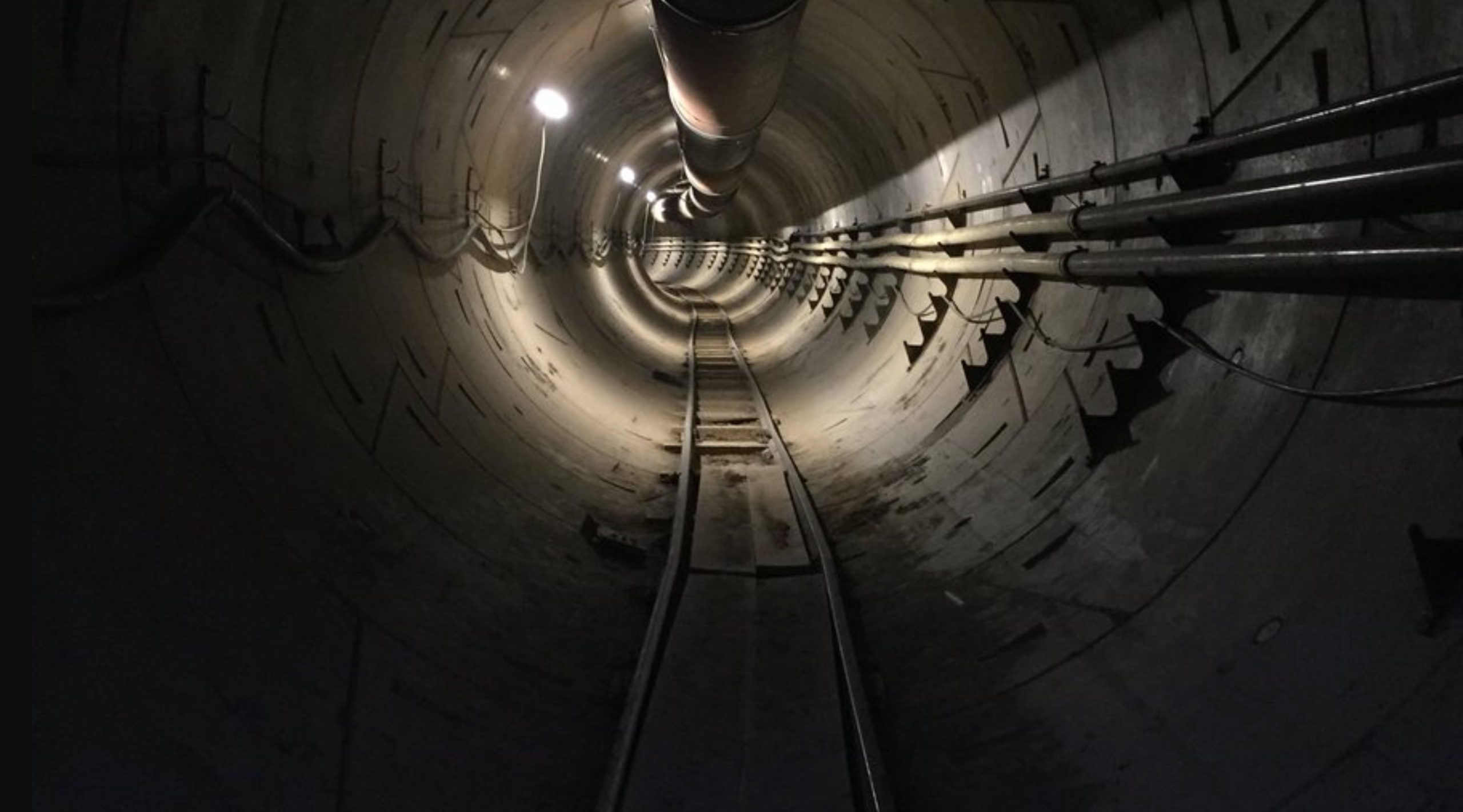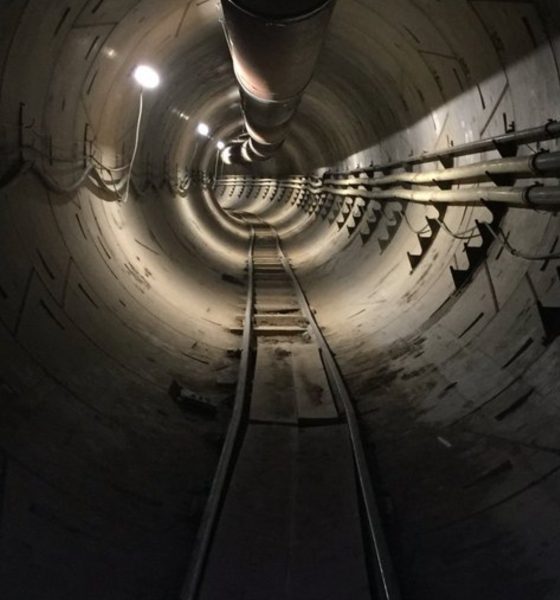

News
The Boring Company’s Chicago tunnel attracts the ire of critics: ‘I can’t wait to kill it’
The Boring Company has ambitious plans for the Chicago-O’Hare high-speed transit tunnel, but political machinations within the city might end up putting the entire project at risk.
Chicago Alderman Gilbert Villegas, for one, noted in a statement to The Verge that he was initially optimistic about The Boring Company’s tunnels, which are expected to offer a smooth, quick ride. Villegas was able to sample some of the tunneling startup’s technology when he attended the Boring Company’s opening party of the Hawthorne test tunnel last December, and based on his experience, he was not impressed.
“It wasn’t as smooth as I thought it would be. It certainly felt too experimental for someone to invest a billion dollars in,” he said.
The Boring Company won the bid for the Chicago-O’Hare project partly due to Elon Musk’s assurance that the construction of the high-speed tunnel, which he estimated will cost $1 billion to complete, will not require taxpayer money. Instead, Musk aims to raise funding for the project through private investors. This idea has caught the ire of Chicago Alderman Carlos Ramirez-Rosa, who expressed his doubts about the project and Musk himself in a statement.
“I’d be shocked if there was any traction moving forward. To me, it was always a pipe dream, a flight of fancy. But my opinion of it has gotten even worse since I’ve been reading all of these details in the media, a lot of stories that paint a lot of doubt on Musk’s ability to deliver this thing. If you look at Elon Musk’s career—he comes off as a grifter,” Ramirez-Rosa claimed.
Mayoral hopeful and former Chicago Public Schools chairman Gery Chico took a similar stance on the project, stating that the Boring Company’s “goofy” tunnel concept will “die on its own.” Another mayoral candidate, Paul Vallas, was even more aggressive. In a statement to the Chicago Tribune, he declared “I’d kill it. I can’t wait to kill it.” Vallas later adopted a less violent stance on the project, stating that he “would [be] happy to be proven wrong—as long as taxpayers are not on the hook for any costs and Mr. Musk fully indemnifies the city for an unexpected damage his big dig might cause.”
In a way, some of the reservations about the Boring Company’s Chicago project appears to be rooted in misinformation. Concerns about taxpayer spending, for one, have stubbornly been present despite Musk’s commitment to fully fund the high-speed tunnel’s construction without public funds. The description of Musk coming off as a “grifter” also echoes much of the accusations thrown towards the CEO by skeptics like Tesla bears, who are passionate about seeing Elon Musk and his companies fail.
It should be noted that while The Boring Company’s Chicago tunnel is seeing a lot of pushback from skeptics, the project still has some supporters among the city’s officials. Chicago Department of Transportation Commissioner Rebekah Scheinfeld, for one, stated that “We would not like to see this go to waste.” Mayoral candidate Bill Daley also took a friendly stance on the project, stating that “Chicago shouldn’t shy away from innovation.”

Elon Musk
Starlink achieves major milestones in 2025 progress report
Starlink wrapped up 2025 with impressive growth, adding more than 4.6 million new active customers and expanding service to 35 additional countries, territories, and markets.

Starlink wrapped up 2025 with impressive growth, adding more than 4.6 million new active customers and expanding service to 35 additional countries, territories, and markets. The company also completed deployment of its first-generation Direct to Cell constellation, launching over 650 satellites in just 18 months to enable cellular connectivity.
SpaceX highlighted Starlink’s impressive 2025 progress in an extensive report.
Key achievements from Starlink’s 2025 Progress
Starlink connected over 4.6 million new customers with high-speed internet while bringing service to 35 more regions worldwide in 2025. Starlink is now connecting 9.2 million people worldwide. The service achieved this just weeks after hitting its 8 million customer milestone.
Starlink is now available in 155 markets, including areas that are unreachable by traditional ISPs. As per SpaceX, Starlink has also provided over 21 million airline passengers and 20 million cruise passengers with reliable high-speed internet connectivity during their travels.
Starlink Direct to Cell
Starlink’s Direct to Cell constellation, more than 650 satellites strong, has already connected over 12 million people at least once, marking a breakthrough in global mobile coverage.
Starlink Direct to Cell is currently rolled out to 22 countries and 6 continents, with over 6 million monthly customers. Starlink Direct to Cell also has 27 MNO partners to date.
“This year, SpaceX completed deployment of the first generation of the Starlink Direct to Cell constellation, with more than 650 satellites launched to low-Earth orbit in just 18 months. Starlink Direct to Cell has connected more than 12 million people, and counting, at least once, providing life-saving connectivity when people need it most,” SpaceX wrote.
News
Giga Nevada celebrates production of 6 millionth drive unit
To celebrate the milestone, the Giga Nevada team gathered for a celebratory group photo.

Tesla’s Giga Nevada has reached an impressive milestone, producing its 6 millionth drive unit as 2925 came to a close.
To celebrate the milestone, the Giga Nevada team gathered for a celebratory group photo.
6 million drive units
The achievement was shared by the official Tesla Manufacturing account on social media platform X. “Congratulations to the Giga Nevada team for producing their 6 millionth Drive Unit!” Tesla wrote.
The photo showed numerous factory workers assembled on the production floor, proudly holding golden balloons that spelled out “6000000″ in front of drive unit assembly stations. Elon Musk gave credit to the Giga Nevada team, writing, “Congrats on 6M drive units!” in a post on X.
Giga Nevada’s essential role
Giga Nevada produces drive units, battery packs, and energy products. The facility has been a cornerstone of Tesla’s scaling since opening, and it was the crucial facility that ultimately enabled Tesla to ramp the Model 3 and Model Y. Even today, it serves as Tesla’s core hub for battery and drivetrain components for vehicles that are produced in the United States.
Giga Nevada is expected to support Tesla’s ambitious 2026 targets, including the launch of vehicles like the Tesla Semi and the Cybercab. Tesla will have a very busy 2026, and based on Giga Nevada’s activities so far, it appears that the facility will be equally busy as well.
News
Tesla Supercharger network delivers record 6.7 TWh in 2025
The network now exceeds 75,000 stalls globally, and it supports even non-Tesla vehicles across several key markets.

Tesla’s Supercharger Network had its biggest year ever in 2025, delivering a record 6.7 TWh of electricity to vehicles worldwide.
To celebrate its busy year, the official @TeslaCharging account shared an infographic showing the Supercharger Network’s growth from near-zero in 2012 to this year’s impressive milestone.
Record 6.7 TWh delivered in 2025
The bar chart shows steady Supercharger energy delivery increases since 2012. Based on the graphic, the Supercharger Network started small in the mid-2010s and accelerated sharply after 2019, when the Model 3 was going mainstream.
Each year from 2020 onward showed significantly more energy delivery, with 2025’s four quarters combining for the highest total yet at 6.7 TWh.
This energy powered millions of charging sessions across Tesla’s growing fleet of vehicles worldwide. The network now exceeds 75,000 stalls globally, and it supports even non-Tesla vehicles across several key markets. This makes the Supercharger Network loved not just by Tesla owners but EV drivers as a whole.
Resilience after Supercharger team changes
2025’s record energy delivery comes despite earlier 2024 layoffs on the Supercharger team, which sparked concerns about the system’s expansion pace. Max de Zegher, Tesla Director of Charging North America, also highlighted that “Outside China, Superchargers delivered more energy than all other fast chargers combined.”
Longtime Tesla owner and FSD tester Whole Mars Catalog noted the achievement as proof of continued momentum post-layoffs. At the time of the Supercharger team’s layoffs in 2024, numerous critics were claiming that Elon Musk was halting the network’s expansion altogether, and that the team only remained because the adults in the room convinced the juvenile CEO to relent.
Such a scenario, at least based on the graphic posted by the Tesla Charging team on X, seems highly implausible.








